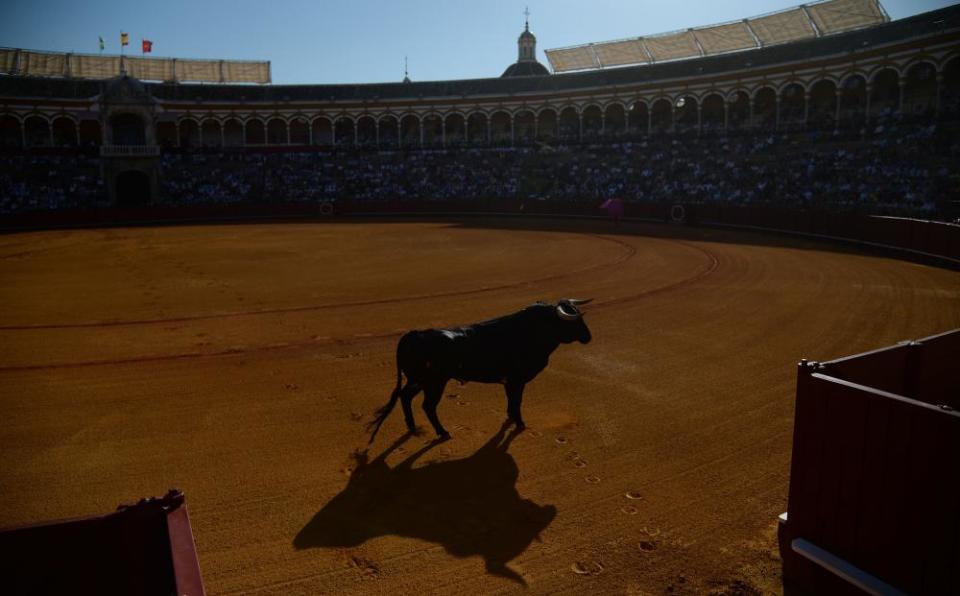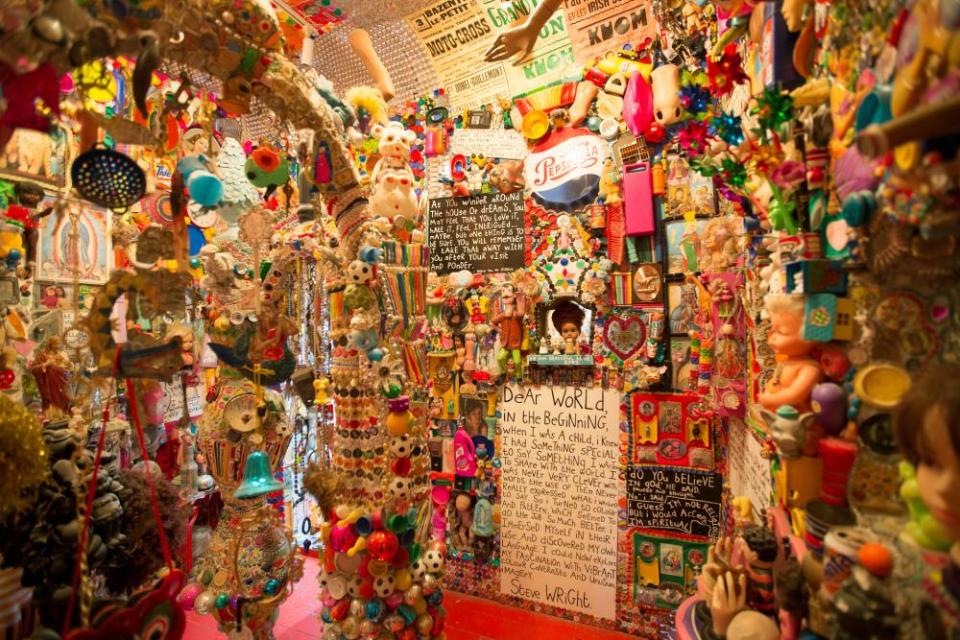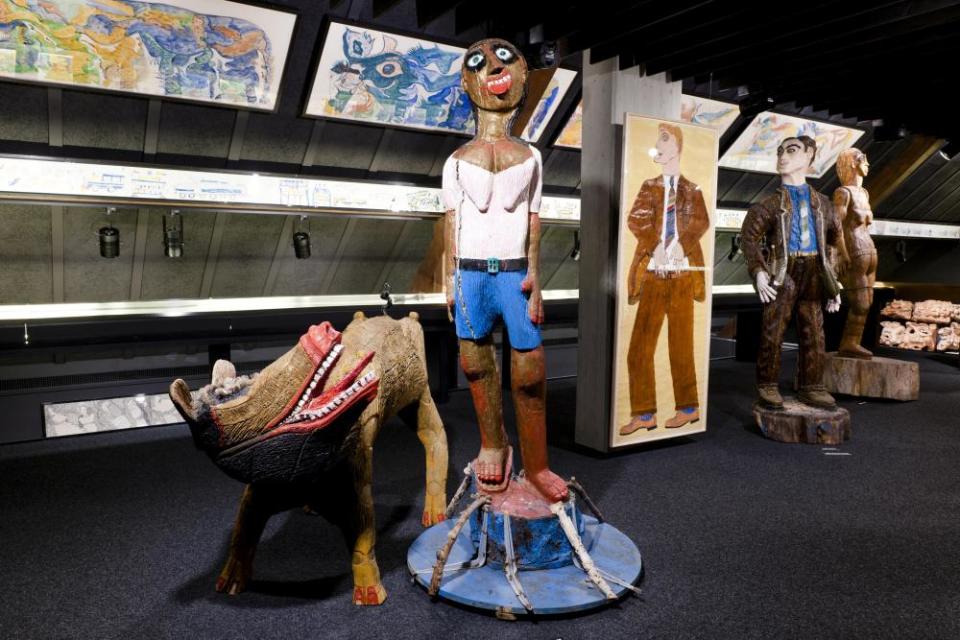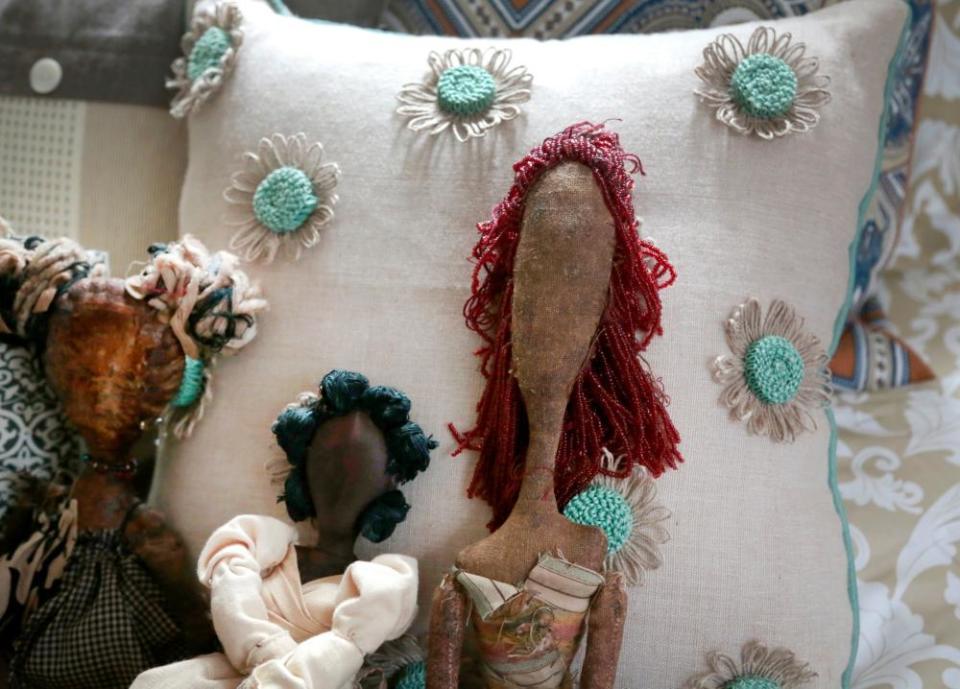Weird, wacky and utterly wonderful: the world's greatest unsung museums
Plaza de Toros de la Real Maestranza de Caballería de Sevilla, Spain
Jessie Burton, novelist
A tourist might more prosaically call this the world-famous bullring of Seville. I lived in Andalucía in my 20s and the culture of bullfighting was unavoidable. I had a kid in my class who, at 16, was a trainee fighter. Whatever your thoughts on the ethics, I defy you not to be captivated by this building and the exhibits within its corridors. It’s a living museum, as bullfights still take place. Standing in the middle of the empty 12,000-seater ring is a hair-raising experience, especially when you notice the wooden panels scarred by horns. The toreador costumes – all camp and skintight glory, butterfly colours and braiding – belie the fully equipped emergency room, a place of blood loss and death since 1749. The matador prayer chapel, the equipment, the bulls’ heads and the black and white photographs seem like relics of a faded world – until you leave and see posters advertising the next fight.

Centrale Montemartini, Rome
Mary Beard, academic and writer
A collection of first-rate ancient sculpture, set in a disused power station that still has some of its machinery. It’s hardly ever visited now though. It’s not easy to get to and it’s in quite an industrial place – where you’d expect a power station to be. So you often have the place to yourself. The contrast between good Roman sculpture and extraordinary industrial brutalism is wonderful.
Intuit: The Center for Intuitive and Outsider Art, Chicago
Olivia Laing, writer and critic
Years ago, when I was working on my book The Lonely City, I made a pilgrimage to Intuit to see the recreation of the artist Henry Darger’s room. Darger was a Chicago janitor who spent his life alone in a boarding house. It wasn’t until he became ill that his landlord discovered an extraordinary trove of artworks. It turned out this lonely man had spent decades creating an enormous body of work about a fantastical universe populated by children, winged animals and soldiers. His room was an artist’s studio, assembled against the odds. It was piled high with materials he’d gleaned from the streets, from balls of string to syringes he shoved pencil stubs in to make them last longer. A monument to indomitable creativity, despite financial and emotional impoverishment.
Olivia Laing’s latest book is Funny Weather: Art in an Emergency.
Garden Museum, London
Maria Balshaw, Tate director
Tucked on to a roundabout, this is the most tranquil of spaces inside and out, with a garden by Dan Pearson and a lovely cafe. At the moment, there is a wonderful exhibition about artist-gardener Derek Jarman’s Prospect Cottage in Dungeness, but at any time this is a retreat from the world right in the centre of the big city.
Museu Afro Brasil, São Paulo, Brazil
Kwame Kwei-Armah, artistic director of Young Vic Theatre, London
When I went about 10 years ago, the first floor of this museum dedicated to Afro-Brazilian culture was what you might expect: videos of Pele and football and stuff. I thought: “This is a bit naff.” But as I went up each floor, the history of Brazil and its connection to Nigeria and West Africa became more apparent, as the art became more abstract. In one room there was an installation of the ruins of a slave ship, which was just wonderful. You could touch the wood, hear the sounds. Then there were these abstract paintings that make you think: “Van Gogh, why did you not say this is who you copied it from?” By the end, I thought: “I need to fly my family over, to show them how a culture is remembered, preserved and celebrated.”
Farleys House & Gallery, East Sussex
Katy Hessel, host of The Great Women Artists podcast
This is where the photographer Lee Miller and her husband Roland Penrose lived after the second world war. Miller studied with Cordon Bleu and became a chef, so it has this amazing kitchen. You can still see all her spices and foodstuffs in the cupboards. But that’s obviously not the most exciting thing - for this home is where all the surrealists and their network congregated. Leonora Carrington, Dorothea Tanning and Picasso all came. They still have tiles in the kitchen painted by Picasso. The couple were amazing collectors too, so there’s work by the likes of Eileen Agar and Penny Slinger. It’s just filled with memories.
Museo Gypsotheca Antonio Canova, Possagno, Italy
Nicholas Cullinan, National Portrait Gallery director

This museum dedicated to the work of the neoclassical sculptor Antonio Canova is exquisite, particularly the renovations started in the 1950s by the architect Carlo Scarpa. The original building, which includes a gallery and Canova’s house, is more neoclassical in style, and then Scarpa updated it. He cut cubic glass windows into the upper corners of the walls, which are beautiful in themselves but also light the work beautifully. You can see the shadows moving across during the day, turning the sculptures into sundials. It’s a perfect marriage of art and architecture, building and content. The museum did get some press recently: it’s where that large Austrian tourist broke the toes off the cast of Pauline Borghese, when he sat in her lap to take a selfie.
South London Gallery
Ryan Gander, artist
This gallery has a rigorous international programme, but still feels very local. It’s very much about the area and the people who live around it. The world has taken a complete turn: we’ve all realised that the things around us matter and we have a different perspective on how global, how centralised, how extravagant, how excessive, and how capitalist the way we lived was. A lot of museums and galleries have community outreach programmes, but SLG’s actually work.
Museo Medardo Rosso, Barzio, Italy
Julia Peyton-Jones, global director, Galerie Thaddaeus Ropac, London
Medardo Rosso, who died in 1928, was a fantastic sculptor. Rodin was meant to have been an admirer. But he’s still not widely known. His works are incredibly tender, sensitive and touching, but not in any sentimental way. The museum, northeast of Milan, is incredible: it’s the house where he used to live and work. The works are modest and beautifully presented. People like to tidy art up, put dates on it, make sense of it, but the great thing about art is that it has something intangible at its core. That intangibility speaks to us in a way beyond words – and Rosso does that in the most fascinating way.
House of Dreams, London
Russell Tovey, actor and host of TalkArt podcast

In 1998, disillusioned by the design and fashion world he was working in, Stephen Wright began to make an artistic documentation of his life, through the throwaway and eccentric objects he finds, inherits or acquires. His home in East Dulwich has become a living museum, sprawling out into the gardens. My heart leapt as I recognised the sweet wrappers and toys of my childhood, and it ached when I looked at his “memory boards” which document the passing of both his parents and his lover within a year and a half. Stephen has lived by the mantra: “I live in this house, but I don’t really live here, I live inside my head.”
Collection de l’Art Brut, Lausanne
Urara Tsuchiya, artist

This museum was built by Jean Dubuffet, who created the term art brut, or raw art, which takes in outsider art but a lot more too. When I visited 10 years ago, there were lots of strange sculptures, such as the work of Morton Bartlett, who made lots of dolls of children and then photographed them. It’s really creepy – quite wrong, but kind of amazing, as they’re so well made. It’s also funny. Loads of times, I just don’t like a lot of art. But this collection is something else, much more original. There are lots of works that seem really obsessive, which is nice. You can tell that the art isn’t just thinking about what’s on trend.
Colored Girls Museum and Barnes Foundation, Philadelphia
Zoe Whitley, director of Chisenhale Gallery, London

The Colored Girls Museum privileges the stories of black women and girls in a way that’s for us and by us. It’s very personally and lovingly presented in a house. The Barnes Foundation, meanwhile, showcases Albert C Barnes’s famous collection. It seamlessly spans anonymous Pennsylvania craftspeople and Picasso, Matisse and Renoir – treating them both equally. We think of collections as big, authoritative and encyclopaedic, but the most interesting ones are super-personal. That’s the hook with these two: works that matter to the individuals who put them together.
The Colored Museum
Hilton Als, writer and critic
A small museum I love: the imaginary but emotionally real museum in George C Wolfe’s play The Colored Museum.
• The winner of the Art Fund Museum of the Year will be announced on 12 October.
• This article was amended on 12 October 2020. Kwame Kwei-Armah is artistic director of the Young Vic, not the Old Vic as originally stated.


